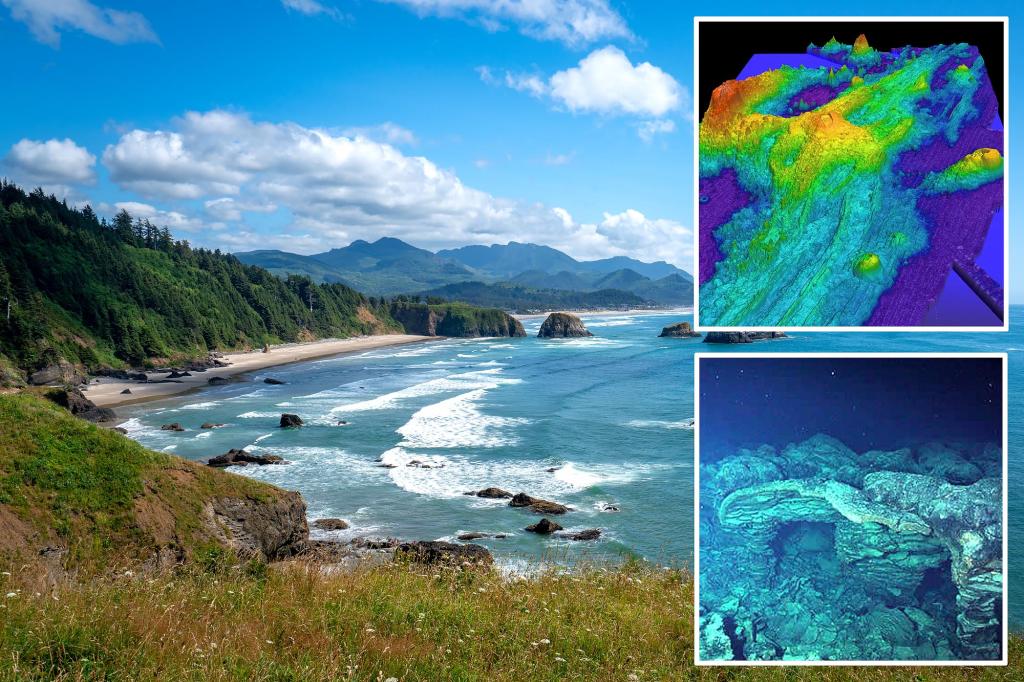Eruption Imminent: Oregon’s Underwater Volcano Shows Signs of Activity
An underwater volcano off the Oregon coast, known as Axial Seamount, is exhibiting heightened activity, with scientists warning it could erupt within weeks. Located about 300 miles offshore, the volcano has swelled with magma since its last eruption in 2015. Researchers are closely monitoring the situation, assessing risks to marine ecosystems and potential underwater geothermal events.
Unprecedented Swelling and Seismic Activity
Axial Seamount, one of the most active underwater volcanoes in the Pacific, has inflated nearly 8 feet since its previous eruption—a clear indicator of magma accumulation. Instruments from the Ocean Observatories Initiative (OOI) detected over 8,000 minor earthquakes in the past month alone, a tenfold increase compared to typical activity.
“The volcano is like a pressure cooker,” explains Dr. William Wilcock, a marine geophysicist at the University of Washington. “The sheer volume of magma and the rapid deformation suggest an eruption is not just possible but likely.” Data from robotic submersibles also reveal rising water temperatures near the summit, further signaling impending activity.
Potential Impacts on Marine Ecosystems
An eruption could drastically alter the surrounding marine environment. Hydrothermal vents, which support unique chemosynthetic life forms, may be buried or reshaped. Species like tubeworms and extremophile bacteria thrive in these ecosystems, which are often compared to extraterrestrial landscapes.
- Short-term effects: Ash plumes and lava flows could smother nearby organisms.
- Long-term benefits: New vent systems might create habitats for colonization.
Dr. Nicole Raineault, Chief Scientist at the Ocean Exploration Trust, cautions, “While eruptions foster biodiversity over decades, the immediate aftermath can be devastating for localized species.” Researchers are particularly concerned about endangered deep-sea corals in the vicinity.
Monitoring Efforts and Technological Innovations
The OOI’s cabled observatory provides real-time data on Axial Seamount’s movements, a breakthrough in underwater volcanology. High-resolution pressure sensors and hydrophones track minute changes, offering unprecedented predictive capabilities.
Despite these advances, forecasting exact eruption timelines remains challenging. “Submarine volcanoes operate on their own schedules,” says Dr. Wilcock. “But we’re closer than ever to accurate predictions.”
Broader Implications for Coastal Safety
While Axial Seamount poses no direct threat to Oregon’s coastline, its activity could indirectly affect fisheries and shipping lanes. Past eruptions have released methane bubbles large enough to reduce water buoyancy—a potential hazard for vessels. Additionally, increased acidity from volcanic CO2 might disrupt local plankton populations, a critical food source for salmon.
What’s Next for Axial Seamount?
Scientists plan to deploy additional sensors and autonomous drones to capture the eruption’s early stages. The event could provide invaluable insights into submarine volcanism and climate interactions. Meanwhile, environmental groups urge policymakers to expand protected marine areas around active vents.
For those interested in tracking updates, the OOI offers live data streams from Axial Seamount. As the volcano stirs, the world watches—a reminder of Earth’s dynamic and unpredictable nature.
See more Update My News



